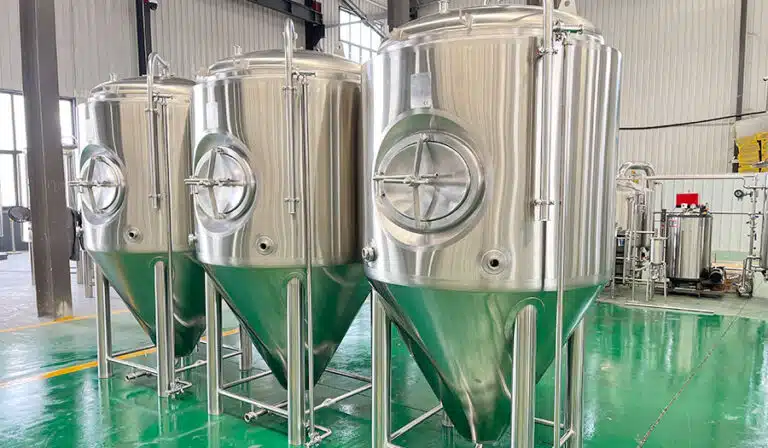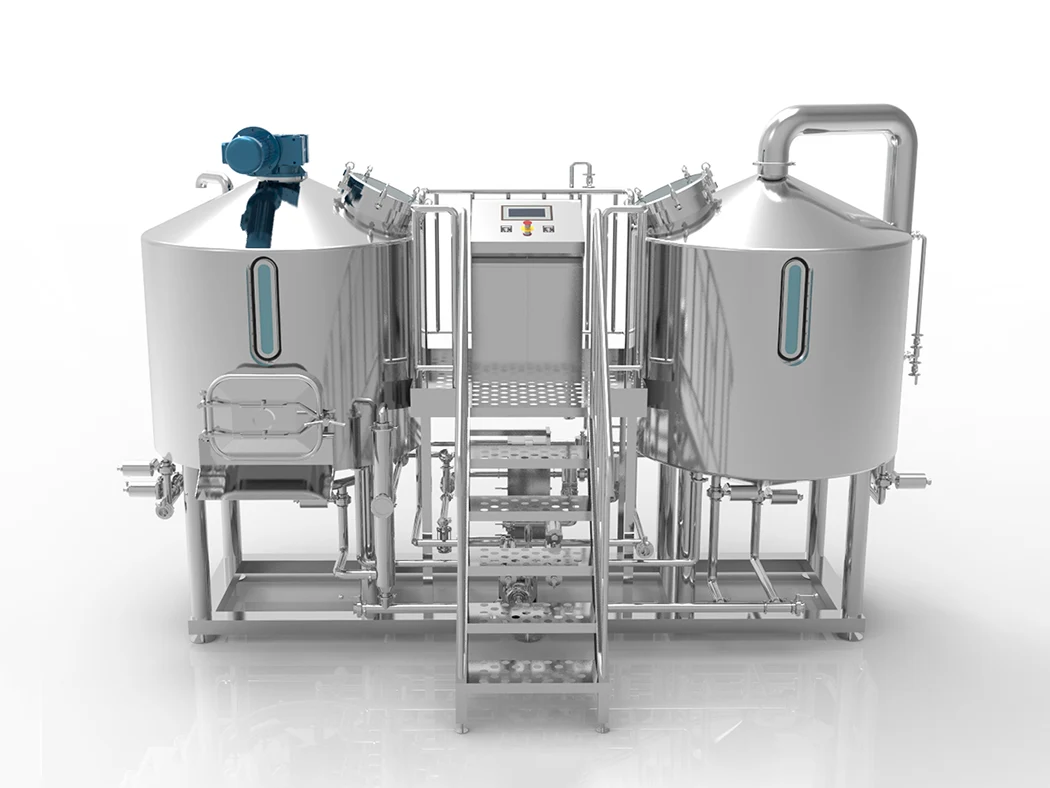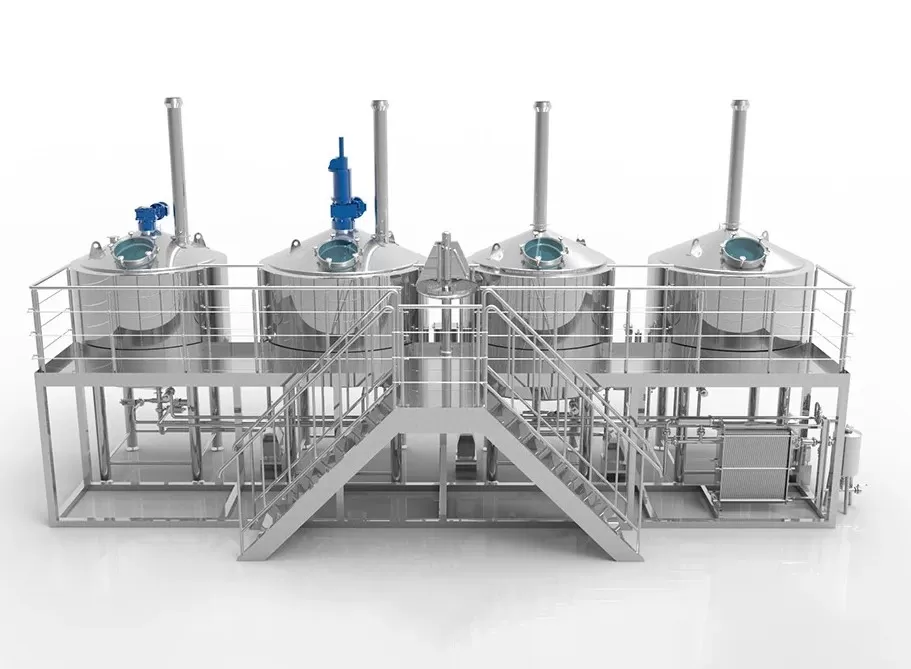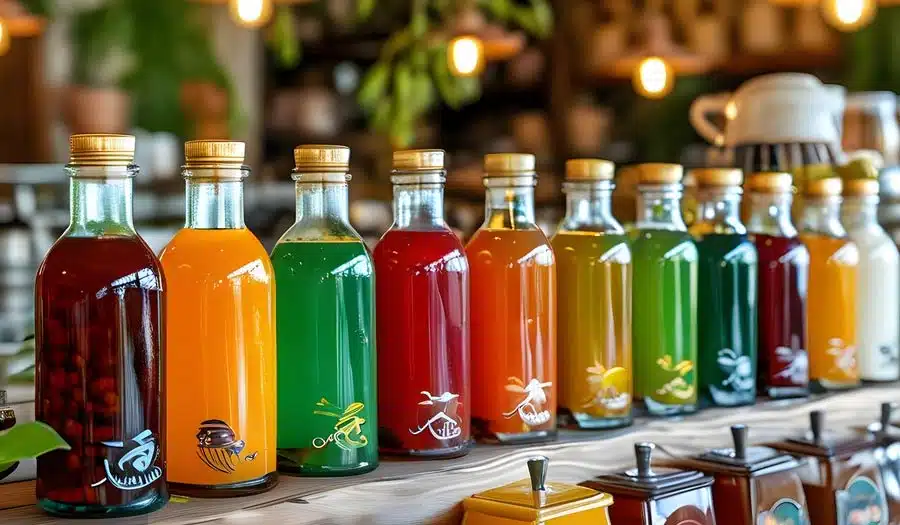Kombucha is a fermented functional beverage made from tea, sugar, and symbiotic bacteria. In recent years, it has gained popularity worldwide due to its potential probiotic, antioxidant, and digestive support functions. With the growth of market demand, more and more home brewers, start-up beverage brands, and even industrial beverage factories are investing in kombucha production.
In the entire kombucha brewing process, the selection of fermentation tanks is undoubtedly one of the key factors that determine product quality, production efficiency, and food safety. This article will analyze how to choose a suitable kombucha fermentation tank from multiple dimensions, such as food-grade stainless steel, container structure design, temperature control and cleaning functions, and capacity matching, so as to help enthusiasts and professional manufacturers avoid detours in the selection of brewing equipment.
Basic requirements for kombucha fermentation
Kombucha fermentation is an aerobic fermentation process. SCOBY converts sugar into a variety of organic acids, carbon dioxide, trace alcohols, and flavor substances under oxygen-rich conditions. Its process conditions put forward the following key requirements for the fermentation tank:
- Food-grade materials: Materials that are harmless to food safety and will not release harmful substances must be used.
- Good ventilation: moderate oxygen contact surface should be provided, but foreign matter contamination should be prevented.
- Strong acid resistance: pH gradually decreases during fermentation, which easily produces an acetic acid environment, which is highly corrosive to containers.
- Controllable temperature environment: The optimal fermentation temperature is 22–30°
- Easy to clean and disinfect: avoid cross-contamination and mold growth.

Material Selection: Why Is Food-Grade Stainless Steel the Preferred Choice?
Stainless Steel vs. Glass vs. Plastic vs. Ceramic
|
Material |
Advantages |
Disadvantages |
Application Recommendation |
|
Stainless Steel (304/316) |
Corrosion-resistant, durable, hygienic, easy to clean |
Higher cost, heavier weight |
✅ Ideal for commercial and industrial brewing |
|
Glass |
Transparent, no odor retention |
Fragile, limited capacity, poor insulation |
Suitable for small-scale home brewing or display |
|
Food-Grade Plastic |
Low cost, lightweight |
Potential chemical leaching over time, retains flavors |
Recommended for disposable or short-term use |
|
Ceramic |
Good insulation, traditional aesthetic |
Fragile, possible lead content in glaze |
Only for specific traditional or decorative purposes |
In commercial kombucha production, food-grade stainless steel (especially 304 or 316 stainless steel) is currently the most mainstream and safest material for fermentation vessels. It complies with food safety standards such as GMP and FDA.
Comparison Between 304 and 316 Stainless Steel
|
Property |
304 Stainless Steel |
316 Stainless Steel |
|
Chemical Composition |
18% Cr / 8% Ni |
16% Cr / 10% Ni / 2% Mo |
|
Acid Resistance |
Good (suitable for most kombucha) |
Excellent (resistant to strong acids and salts) |
|
Cost |
Lower, high cost-performance ratio |
Higher, about 20–40% more expensive |
|
Use Case |
Standard kombucha and everyday fermenters |
Fruit-acid drinks, premium production lines |
For most kombucha brewers, 304 stainless steel is sufficient for everyday needs. However, if your brew includes fruit juice, spices, or requires stricter hygiene, 316 stainless steel is the safer choice.
Structural Design: Enhancing Brewing Efficiency and Hygiene
Common Fermentation Tank Designs
- Open-Top Tanks:Top is fully open, allowing easy access and oxygen exposure — ideal for aerobic fermentation and small-batch or home brewing. Requires a sanitary-grade mesh cover to prevent contamination.
- Closed Tanks:Sealed top with filtered air inlet to prevent cross-contamination. Suitable for industrial-scale production.
- Conical Bottom Tanks:Facilitates sediment discharge and SCOBY separation, improving precision in fermentation control.
- Jacketed Cooling Tanks:Equipped with a cooling jacket for temperature control, ideal for high-consistency production.
Oxygen Exposure Control
Kombucha requires controlled oxygen exposure — enough to sustain SCOBY health but not so much that it causes over-oxidation or contamination. High-end systems often include:
- Filtered Breather Port (HEPA-grade)
- SCOBY Support Tray
- Adjustable Air Valves
Ease of Cleaning and Maintenance
- Mirror-Polished Interior:Prevents residue buildup and supports effective CIP (Clean-In-Place) processes.
- Bottom Drain Valve:Ensures complete drainage and facilitates thorough cleaning.
- CIP Spray Ball System:Provides full spray coverage for automated internal cleaning.
- Large Manhole Opening:Allows manual access for inspection or deep cleaning.
- Capacity Selection: Match Fermenter Size to Production Scale
|
Tank Capacity |
Typical Application |
Recommended For |
|
5–50L |
Home brewing, restaurant display |
Kombucha enthusiasts |
|
100–300L |
Small-batch production, pilot runs |
Startups, farms, microbreweries |
|
500–1000L |
Medium-scale supply |
Regional brands, e-commerce beverage businesses |
|
2000L+ |
Industrial production |
Large-scale operations, commercial export factories |

ecommended Functional Features for Kombucha Fermenters: Creating an Efficient, Safe, and Controlled Brewing Environment
Temperature Control System (Heating / Cooling Jacket)
- The optimal fermentation temperature for kombucha is typically between 22°C and 30°
- Temperatures that are too high can disrupt microbial balance.
- Temperatures that are too low slow fermentation and reduce acidity.
It is recommended to equip fermenters with a dual-layer jacket or internal coil system for:
- Hot or cold water circulation to precisely control temperature
- Coping with seasonal or large-scale production temperature fluctuations
- Ensuring consistent flavor and stable microbial activity, batch after batch
Temperature regulation is one of the key factors in maintaining product quality.
CIP (Clean-In-Place) Automatic Cleaning System
As kombucha production scales up, manual cleaning becomes inefficient and prone to hygiene risks. A CIP system offers:
- Automated spray cleaning via rotating spray balls at the tank top
- Alternating cycles of alkaline, acid, and hot water rinses
- Reduced risk of cross-contamination and improved food safety
- Now widely considered a standard configuration in modern food-grade fermentation equipment
Sight Glass / Liquid Level Gauge / Thermometer
Real-time monitoring is essential for precise fermentation control. Recommended features include:
- Side-mounted sight glass or level gauge to observe liquid volume
- Digital or mechanical thermometer to track temperature fluctuations
- Optional pressure gauge for semi-sealed systems to monitor CO₂ buildup
Integrated pH Monitoring and Sampling Port
pH is a key indicator of fermentation progress and safety. The following are recommended:
- Sanitary sampling valve for sterile quality checks
- pH sensor port, compatible with real-time monitoring systems
- For medium to large-scale production, automated pH logging and alerts help ensure consistency and compliance

Manway and Sediment Outlet Design
- A manway (manhole) allows for manual inspection and maintenance
- A conical bottom with sediment outlet enables easy removal of yeast residue and sediment
Design suggestions:
- Quick-drain valve at the tank bottom for efficient emptying
- High or side-mounted manhole with a quick-release handle for easy access and post-CIP inspection
Automation and PLC Control System (Optional)
For factory-scale operations, integrating automation significantly boosts efficiency. Recommended capabilities include:
- Integrated control of temperature and pH
- Batch recordkeeping and data traceability
- Fault alerts and remote monitoring via PLC or SCADA systems
Budget and long-term cost assessment: short-term investment, long-term value
When choosing kombucha fermentation equipment, many start-up brands or small and medium-sized producers tend to focus too much on the initial purchase price and ignore the comprehensive costs and benefits brought by the equipment throughout its life cycle. In fact, the investment in the fermentation tank should be regarded as a long-term investment, which is not only related to production efficiency, but also directly affects product quality, compliance and future expansion capacity.

Initial Purchase Cost Comparison
|
Material |
Initial Investment |
Lifespan |
Recommended Scale |
|
Food-Grade Plastic |
Low (¥100s–¥1000s) |
6 months – 1 year |
Home use or temporary test batches |
|
Glass |
Medium (¥100s–¥1000s) |
1 – 3 years |
Display or small lab-scale testing |
|
Ceramic |
Medium-High |
Fragile, not CIP-compatible |
Personalized or decorative use only |
|
Stainless Steel 304/316 |
High (¥1000s–¥10,000s+) |
5 – 10+ years |
Commercial production and export operations |
Although stainless steel fermenters involve a higher upfront cost, their corrosion resistance, sanitary performance, long service life, and low maintenance needs result in a lower cost per use over time.
Operating Costs and Hidden Expenditures Comparison
|
Cost Category |
Plastic / Glass Fermenters |
Stainless Steel Fermenters |
|
Cleaning Costs |
Manual cleaning, time-consuming, residue-prone |
CIP-compatible, high-efficiency automated cleaning |
|
Contamination Risk |
Scratches easily, bacterial retention |
Mirror-polished interior, thorough sanitation |
|
Product Consistency |
Difficult to regulate temperature, high batch variability |
Temperature control integration, consistent quality |
|
Compliance & Certification |
Usually not GMP/FDA compliant |
Easily meets food-grade standards |
|
Scalability & Expansion |
Requires full equipment replacement |
Modular, compatible with system upgrades |
Conclusion
Brewing kombucha is an art that merges traditional microbial fermentation with modern beverage innovation — and the fermentation tank is truly the heart of this process.Choosing a fermenter that is safe, efficient, easy to clean, and corrosion-resistant not only preserves product flavor and consistency, but also greatly enhances brewing efficiency and food safety.Whether you’re a quality-driven kombucha enthusiast or an entrepreneur building a brand, understanding the differences between fermenter types and knowing how to choose the right one is the first essential step toward stable production and sustainable growth.




